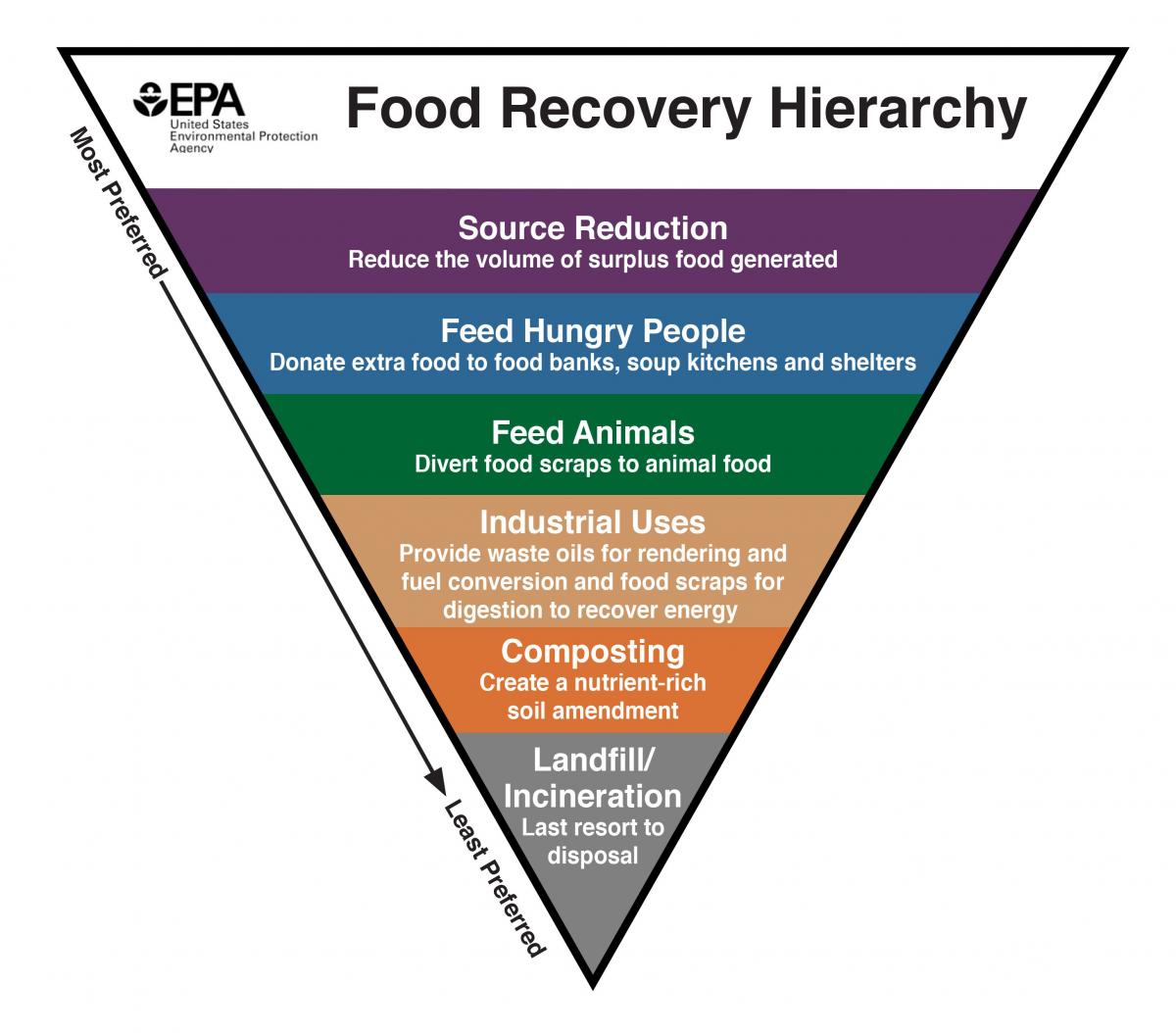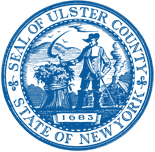Attention Large Food Scraps Generators:
- Guidelines, reporting forms, and other information are available here: Guidelines & Forms webpage
- Resources for implementing the law are available here: Resources webpage
- Food Waste Prevention and Recovery Act Informational webinars (11/15/21) Day 1 & Day 2
Background: In 2019, the Ulster County Legislature enacted the “Food Waste Prevention and Recovery Act”. This law requires large food scraps generators to separate food waste from the general waste stream and then either arrange for its reuse by the food insecure or for animal feed, compost it on site, or arrange for licensed services for the purpose of delivering it to a processing facility for composting or anaerobic digestion. The law will remove food waste generated on an annual basis from the waste stream incrementally from generators producing 2 tons per week (starting on January 1, 2021) to 0.5 tons per week by January 1, 2024.
The full text of the Act can be found at the following link: Food Waste Prevention and Recovery Act.
Ulster County refrences the publicly availible New York State Pollution Prevention Institute’s (NYSP2I) Organic Resource Locator (May 2021 data) to identify an initial list large food scraps generators who are regulated under the law in the County. Ulster County subsequently reviews and finalizes who is a large food scrap generator, and Ulster County is solely responsible for determining who are regulated under the law in the county. The Organic Resource Locator is a web-based mapping tool that provides data on organic waste resources and utilization pathways in New York State for information purposes only. The goal of the Organic Resource Locator is to enable efficient and increased utilization of organic resources by connecting producers of organics with those who have a use for them, diverting a valuable resource from our landfills.
The hierarchy outlined in the Ulster County Food Waste Prevention and Recovery Act represents Ulster County’s policy for prioritizing the reduction, reuse and recycling of food scraps. The hierarchy shall be a basis for the County’s education and outreach programs, and all food scraps generators are encouraged to manage food scraps accordingly.
- Source Reduction: The first tier of the hierarchy is source reduction, reducing the volume of surplus food generated. Food scraps generators may follow federal, state or county guidelines or use other methods to reduce spoilage, monitor waste and make other adjustments to reduce food waste and save money.
- Recovery: The second tier is recovery, feeding wholesome food to hungry people. Facilities with excess edible food should distribute excess foods for the purpose of providing nourishment to the food insecure through the local network of pantries and soup kitchens and other food-reuse programs in accordance with New York State Sanitary Code Part 14 and Ulster County Sanitary Code Article II. Donations of food are covered under the Bill Emerson Good Samaritan Act(link is external of 1996, 42 U.S. Code § 1791.
- Repurposing: Third is repurposing, feeding animals. Federal, state and municipal governments and entities regulate the use of food scraps in animal feed by setting requirements which govern the type of animals that may be fed food scraps and the kind of food scraps that may be fed to animals. When done responsibly and in conformity with applicable regulations, feeding food scraps to animals has many economic and environmental benefits.
- Recycling: Fourth is recycling, processing any leftover food such as by composting or anaerobic digestion to create a nutrient-rich soil amendment. The material that is left over from anaerobic digestion must be either composted or land applied. For the purpose of this law, pulverizers and other sink disposal systems are not acceptable alternatives for composting.

There are many benefits associated with diverting food scraps from the waste stream, including reducing food waste, cost savings, and avoiding greenhouse gas (GHG) emissions associated with the decomposition of organic materials in landfills.
- Food waste reduction: EPA estimates that more food reaches landfills and incinerators than any other single material in our everyday trash, constituting 22 percent of discarded municipal solid waste. Large food scraps generators can partner with local food banks or other emergency feeding programs to donate edible foods, or donate food scraps to local farms for animal feed or even for use as a land application.
- Cost savings: It may cost less to divert food scraps rather than contracting with a waste hauler to truck them away along with other solid waste. There are also tax incentives for food donation in New York State (see the legal fact sheet linked below).
- Avoided GHG emissions: According to the United States Environmental Protection Agency’s Waste Reduction Model (WARM), every two tons of food waste that is composted versus sent to a landfill avoids 1.08 metric tons of carbon dioxide equivalent (MTCO2E) from being emitted into the atmosphere in the form of methane. Methane is a greenhouse gas approximately 84 times more potent than carbon dioxide (when measured over a 20 year period).

